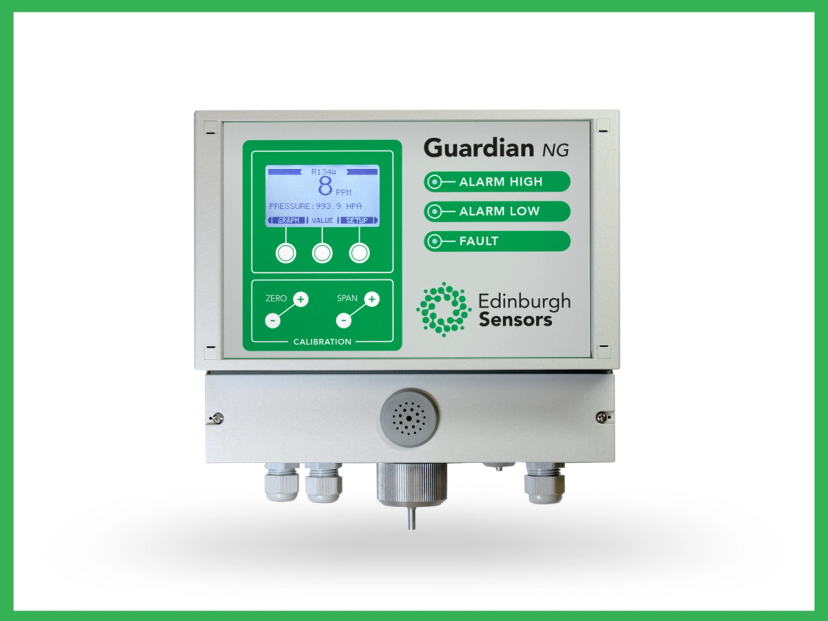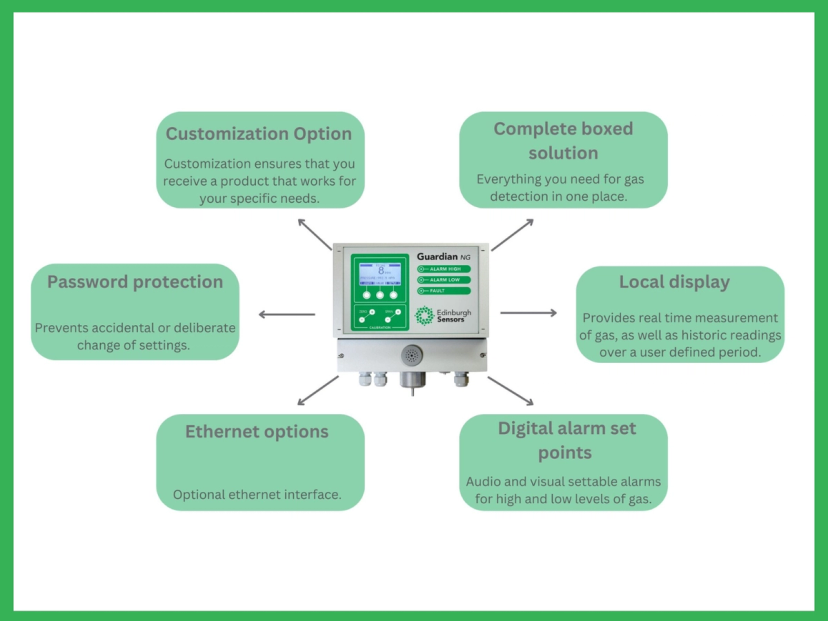Methane – The live fast die young greenhouse gas
This guest editorial from Techcomp Lab Products explores methane gas, its worldwide implications, and how we can reduce its greenhouse gas affects
9 Oct 2024
The Guardian NG Infrared Gas Monitor
Methane gas is a major contributor to global warming, and the agriculture industry is responsible for a large portion of these emissions. Reducing methane gas emissions is essential for a happier and healthier planet. A vital step in this process is having an efficient method to monitor gas levels, so that any variations in emissions are easily identified.
The Sensors Guardian NG offers quick, efficient and precise gas detection, with accurate methane gas readings even for the smallest changes in environment.
What is methane gas?
Methane (CH4) is a colourless and odorless greenhouse gas which is extremely volatile, and is one of the major contributors to global warming due to its high potency. Roughly one third of methane gas emissions occur naturally through sources such as wetlands. However two thirds of emissions are due to human activity, with agriculture activities being a major contributor. Specifically, cows are responsible for around 40% of the worldwide methane gas emissions. Not only is methane gas a major contributor to global warming, but is also a health and safety risk due to its volatile nature.
How does methane gas contribute to global warming?

CO2 and methane molecular structure
Whilst methane is not as prevalent in the atmosphere as carbon dioxide, its greenhouse gas effect is more potent, making this gas a major contributor to global warming.
But what do we mean by a more potent greenhouse effect?
Essentially, methane is significantly better at trapping heat compared to carbon dioxide, and this is primarily due to the structure of the molecule. Methane has one central carbon atom which has four separate hydrogen bonds, whereas carbon dioxide has one central carbon atom with two separate oxygen bonds (see image).
Methane has more bonds, and a more complex geometrical shape than carbon dioxide, and this allows methane to have more movement. As a result, this increases the absorption rate of infrared light significantly, which means that more heat is trapped within our atmosphere, making our planet hotter and hotter.
Methane goes by the 'live fast die young' rule, and so does not have a very long lifespan. Methane will only exist in our atmosphere for about 10–20 years, and after this period it will break down and become carbon dioxide and water. However, the carbon dioxide it becomes will continue to heat the climate for hundreds, and sometimes even thousands of years. This means, despite the fact methane 'dies' quick, it will still cause problems after its broken down.
It could be said that reducing methane emissions is just as important as reducing carbon dioxide emissions, so how do we reduce these emissions?
How do we reduce methane gas emissions?
Reducing methane emissions is essential for both the health and safety of the planet and the people in it. Since methane is extremely volatile, it poses a major health risk, and so monitoring methane emissions is essential, particularly for industries where methane is a byproduct.
1. Monitor emissions
The first step to reducing methane emissions is to measure current gas emissions, that will make well-informed decisions, and to work towards monitoring and reducing emissions. The Sensors Guardian NG is ideal for monitoring gas levels. It features a rapid response time, and accurate readings, even when the change in emissions is minor.
2. Explore approaches to reduce emissions
A major contributor to methane emissions is the agriculture industry. Cows produce large amounts of methane when they defecate or burp, and this methane is then released into the atmosphere. Roughly 40% of global methane emissions are caused by cows alone, and so finding a way to reduce these emissions is vital.
How do cows cause such high methane emissions?
Just like with humans, a cows stomach contains billions of microbes, which aid in food digestion, vitamin production, and play a role in their immune function. Genetic makeup, nutrients, and diet all affect the gut microbiota present within a cows stomach. Interestingly, the cow itself is not the reason for methane production, the gut microbiota can be blamed for all the gas emissions.
It is possible to alter the digestive pathway of cows to reduce methane gas emissions. Some success has been found by changing the cows diets, which results in the microbes found in their stomach changing. However, diet alone is probably not enough to significantly reduce gas emissions, and so the future of research could be in gene editing and selective breeding.
Gene editing and selective breeding
Since the microbes are the real culprits, there is current research investigating the possibility of altering the genetic makeup of cows – to get rid of the problematic microbiota. Although it would probably not be possible to genetically modify a cow to produce no methane, it is highly possible to alter the microbiota so that significantly less methane gas is produced. In the future, gene editing and selective breeding could occur to reduce the amount of methane producing gut microbiota found in the stomach.

Edinburgh Sensor’s Gas Monitor range offers high accuracy for the detection and measurement of gases
Importance of methane gas detection
This vital research relies on monitoring methane gas production by cows accurately. The change in methane emission could be small, therefore sensing technologies which are sensitive as well as accurate are vital. An effective solution for this is non-dispersive infrared (NDIR) sensing technology, as methane highly absorbs infra-red light.
The Sensors Guardian NG is a type of NDIR device, and is the ideal solution for all gas sensing needs, including methane monitoring. It is integrative and customizable, allowing users to tailor it to their specific requirements.
The content for this guest editorial was provided by the team at Techcomp Lab Products.

